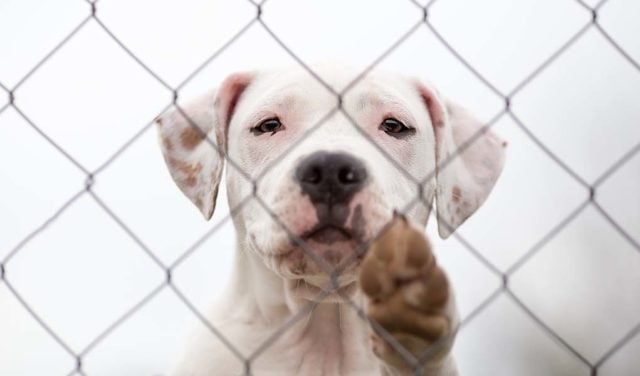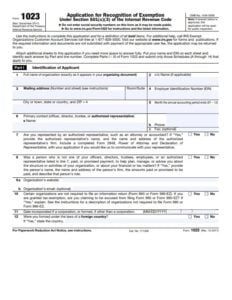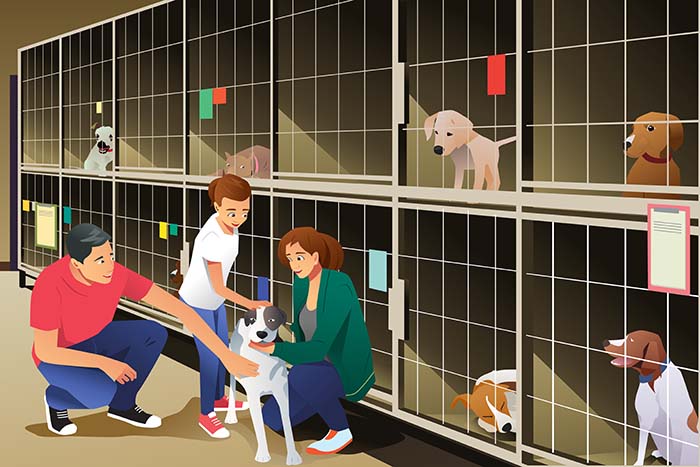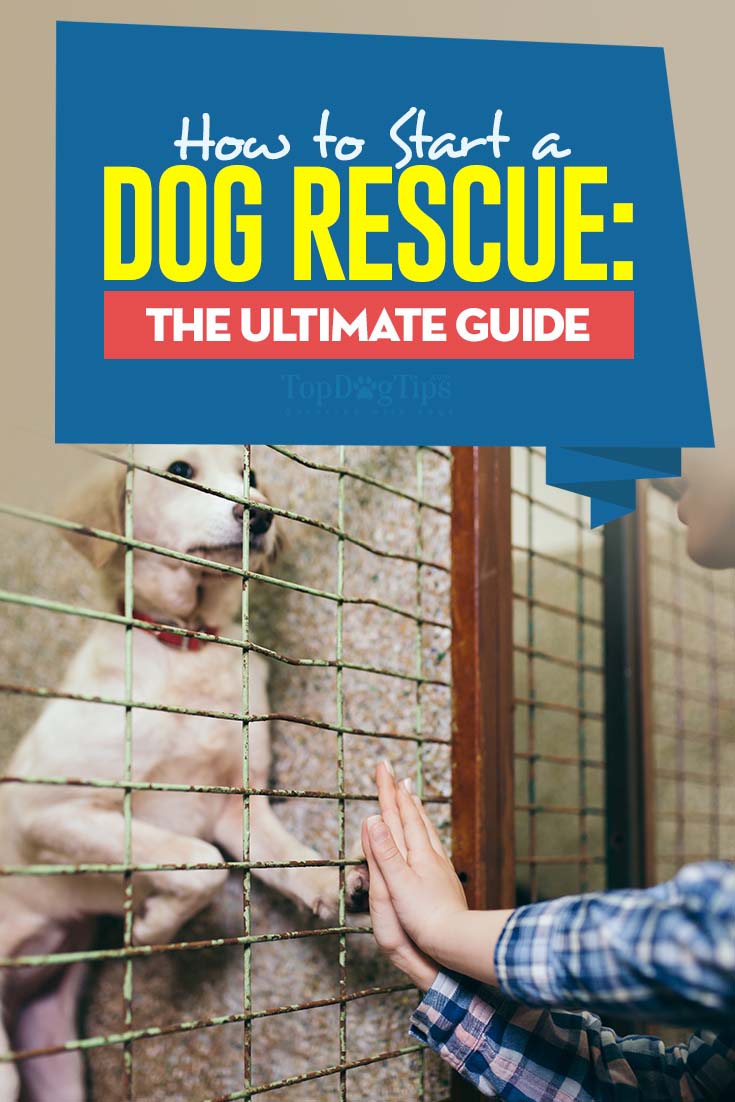
Table of Contents
- Is a Dog Rescue Right for You?
- How to Start a Dog Rescue:12-Step Process
- Step 1: Do Your Research
- Step 2: Your Mission Statement
- Step 3: Set Your Goals
- Step 4: Establish Your Board of Directors
- Step 5: Obtain 501c(3) Nonprofit Status
- Step 6: Accounting and Financial Budget
- Step 7: Your Organization Policies and Standards
- Step 8: Get the Community's Support
- Step 9: Organize Your First Meeting
- Step 10: Working With Volunteers
- Step 11: Provide Services
- Step 12: Monitor Rescue's Health and Progress
If you are a dedicated dog lover with a desire to make a difference, then you have probably considered starting your own dog rescue at some point.
But do you know where to begin, how to keep it running, and how to start a dog rescue from scratch?
To help you get a better understanding of the process, here's a comprehensive guide on how to start a dog rescue in your area, with some important words of advice throughout.
Is a Dog Rescue Right for You?
Before we start talking about how to start a dog rescue and the steps involved in setting it up, you have to consider whether this venture is for you.
This is important because starting a dog rescue is a commitment and not something that you can back out of midway if you realize it’s not what you thought it would be.
It comes with certain responsibilities.
By the time you launch your dog rescue organization, you have committed to helping the dogs you take in and future pet owners looking to save animals, and it’s your responsibility to make sure that those dogs are cared for properly and pet owners receive the necessary guidance, whether that means that rescue pets stay in your care for three weeks or three years.
Here's what you should consider before looking into how to start a dog rescue and when trying to determine whether running a rescue organization is for you:
Funding. Do you have the financial resources needed to begin and fund a rescue organization? It's true that most rescue organizations run on donations for a large part, but if those donations are few, are you going to be able to provide for the needs of your rescue and your rescue inhabitants, or find means to fund it?
Legalities. Do you have the space needed to run a safe, sanitary, and lawful animal rescue organization? Depending on where you live and where your dog rescue is located, different laws exist to govern the property and zoning requirements and limitations on building specific businesses.
Skills and experience. Do you have the training needed to safely run a dog rescue organization, or do you know people who do? Building a rescue means knowing how to work with dogs that have behavioral and health concerns, understanding how to help dogs decompress after spending time in a shelter, knowing the local laws that relate to pet rescue organizations, and confiscating, receiving, or buying rescue animals from owners.
Relationships. Do you have a veterinary contact who is prepared to work with your rescue and provide discounted rates to allow you to provide vet care to the dogs you rescue? Do you know any dog trainers or canine behaviorists who can help you retrain abandoned dogs with behavioral issues?
Promotion. Do you have a platform that you can use to advertise your rescue and the dogs you take in? Whether it's a website, social media platforms, or other channels (yours or people you know), you'll likely need some online and offline promotions of your dog rescue to help it function and find donations.
Time. Do you have the time needed to dedicate to running a rescue, and are you prepared to have your rescue life run into your home and family life? When you just decide on how to start a rescue at first, it may launch like a part-time hobby, but as it grows, it's likely to become closer to a full-time job.
Character. Do you have the personal characteristics needed to run an efficient and successful animal rescue? If you're looking for ways how to start a dog rescue, you're likely a passionate animal lover already, but you'll also need patience, resilience, and determination to keep it running, like any other business.
Speaking of your personal character, consider what it takes not only to start a rescue but to keep it running and deal with all the problems that arise. Even if your dog rescue is a non-profit organization, it's similar to running any other business:
- You will have to maintain a cool head while managing angry potential adopters who don’t get the dog they want because you deem it an unfit match.
- You will have to handle the emotional toll and physical toll of dogs that have been pulled from devastating circumstances.
- You will have to be able to use good judgment to match adopters to the right dog.
- You will have to cope with not being able to save every dog that you are called to save; it’s simply not possible financially or in consideration of the space that you have available.
- You will need to keep a level head with adopters who return dogs to your organization, even if you don’t agree with their reasons for returning the dog to you.
- You will need to be familiar with the principles of a non-profit business or have the resources to help you run a successful non-profit business.
With all the above considered, if you seriously still believe that it's something you're ready to deal with, and more importantly, if it's something you're looking forward to working on, then you're a good candidate for launching your own animal rescue venture.
So here are all the steps to know how to start a dog rescue from scratch and what to expect.
RELATED: The 10 Best Animal Charities of This Year
How to Start a Dog Rescue:12-Step Process
There are several steps you'll have to take to start a dog rescue from scratch and ensure it runs successfully.
Step 1: Do Your Research
Do plenty of research on how to start a dog rescue and how to keep it running as you can.
Look at it from different angles and find others who've done the same to read about their cases.
Find out what it takes to run a successful business and what it takes to run a successful animal rescue by reading up on successful rescues and businesses.
Here are some articles on how people start their rescues and “Our History” pages to check:
- How Judy Obregon started her own animal rescue
- A 13-year-old teen launches a nonprofit dog rescue
- History of PurrfectPals animal rescue
- History of Catskill Animal Sanctuary
- History of Woodstock Sanctuary
- History of The Gentle Barn
If you search, there's a lot more of them online. But don’t just read these articles and histories on how to start a dog rescue by others.
I recommend you contact these and many other rescue owners and respectfully ask for their advice if they have the time to set aside.
Most of them are likely to at least give you an email response with some tips since you're on the same mission as them – in an attempt to help more animals.
Build relationships with other rescue owners and build a network of contacts who can help you by providing advice, resources, connections, and anything more you might need.
Utilize these relationships to find other experts in the field, such as veterinarians and dog trainers, who can later help you run your own rescue.
Here are a few animal rescue organizations you can contact and see if they would offer you some advice:
- 30 Animal Shelters that Make America Proud
- Noah's Ark Rescue
- Austin Pets Alive!
- Compassion Without Borders
- RSPCA
You can find more of these on Google, and I recommend starting with dog rescues and animal shelters that are near you so you can visit them and possibly talk to owners face to face or even take them out for coffee.
Google “dog rescue near me” to see all local rescues in your area.
During this step, you also want to determine what type of animal rescue you want to start.
There is more to this step than just having a love for a particular type of dog.
Before you look into how to start a dog rescue, you need to determine if there is a need for a particular type of rescue in your community and if you are going to be in direct conflict with other organizations.
If you’re going to invest time, energy, and resources into dog rescue, you want to be sure that there is a need for that rescue and your investment is not going to waste.
For example, if your region has three poodle-specific rescues, there is likely no need for another poodle rescue.
If, however, your region has a problem with senior dogs in shelters, a senior dog rescue would be a welcome part of the community. It's a win-win-win for everybody.
This step will also require you to research and learn as much as possible about animal care.
While you won’t be serving as a veterinarian for your rescue (unless you are a licensed veterinarian), you will need to be able to administer emergency care and know how to recognize signs of illness and injury.
Once you have this figured out, the next step in how to start a dog rescue is a strong foundation of “why” you do this.
Step 2: Your Mission Statement
A mission statement is a clear and articulate statement that encapsulates the purpose of your dog rescue.
It’s important to be as concise as possible when writing a mission statement, but it’s also necessary to write it in a way that appeals to others.
Do this by keeping it positive, maintaining a focus on actions and results, and making it a statement that will motivate others to be as excited about your cause as you are.
Think about why you wanted to know how to start a dog rescue in the first place and add those points.
A great example of a rescue mission statement is that of BestFriends.org:
“…to bring about a time when there are No More Homeless Pets.”
You can start with a statement like this and expand from there. Here are a few more examples of great mission statements from other animal rescues:
- National Mill Dog Rescue's mission statement
- Leave No Paws Behind Rescue's mission statement
- Farm Sanctuary's mission statement
Put time and effort into writing your dog rescue mission statement because it will form a solid foundation for your business, but it will also play an important role in filing your corporate papers.
With your mission statement figured out, the next step in how to start a dog rescue is answering your “why” question with a set of goals you want to accomplish.
Step 3: Set Your Goals
Your mission statement is a general statement of your intentions as a business, but you also need to set goals.
Goals differ from your mission statement because they outline what you must do in order to complete your mission, and they're one of the foundations of how to start a dog rescue that will function successfully after its launch.
In the example of BestFriends.org above, the goals of the company answer the question of what the animal rescue will need to accomplish to bring about a time when there are no more homeless pets.
Some of the goals that Best Friends has in place to help to accomplish their mission include:
- increasing awareness of spaying and neutering
- providing low-cost spaying and neutering clinics
- educating the public about the homeless pet crisis
When setting your goals for your own dog rescue, you want to begin by setting up your long-term goals first.
For example, after you know why you need to know how to start a dog rescue, think about where you would like your organization to be ten years from now.
Perhaps you’d like to have a free spay and neuter clinic set up in every county of your state or a type of dog rescue in your state that will save banned dog breeds.
Once you have set up your long-term goals, work backward by creating short-term milestones that you will need to meet in order to make that long-term goal come to fruition.
For example, using the above long-term goal, perhaps within your first year, you would like to have five free clinics set up.
When it comes to setting your goals and how to start a dog rescue that doesn't go down after its first year, it’s important to know that success is the best measurement of your progress.
Break larger goals into smaller, more achievable pieces so that you have a higher chance of successfully taking small steps to accomplish that ultimate goal.
This success will show that your rescue is making progress.
With all this written down, the next step in how to start a dog rescue is more practical, and we're going deeper into legal stuff.
Step 4: Establish Your Board of Directors
A board of directors is responsible for governing your dog rescue organization.
They not only establish the direction of your rescue, but they are charged with maintaining the ethical, financial, and legal well-being of your organization as well.
An executive director is hired by the board of directors. At this point, many people wanting to know how to start a dog rescue change their minds because this seems like we're treading deep waters, and it's true.
But these people are also your trusty companions who will help you.
It isn’t unusual for members of the board of directors to also play a role in the dog rescue organization; for example, the chief financial officer may also be the veterinarian who cares for the dogs in your rescue.
It’s important for these dual-purpose directors to be able to separate their responsibilities; however, they should have the time to handle all of their responsibilities.
Here are a few examples of how many people are on the board of directors:
- SPCA of Texas board of directors
- National Mill Dog Rescue board of directors (PDF)
- The Humane Society of the United States board of directors
When choosing your board of directors, consider the skills that each member of the board should have to be conducive to the success of the organization.
It’s also important to consider the personalities of each board member because, without cohesion, your board of directors is going to fall apart and leave your rescue in trouble quickly.
Petfinder.com has a great guide on the essential components of board directors that you're looking to bring into your dog rescue.
It covers what you need to consider before you even decide to think about how to start a dog rescue because you'll need to find people like that first.
An article from AnimalSheltering.org provides some great tips on how to pick the best people for the job.
For the most part, a board of directors should be somewhere between four to seven members, and in the above-provided examples, you can see that most pages do have about that many people on their page (with bigger organizations like HSUS having more).
This allows for a variety of skills and a division of labor without having “too many cooks in the kitchen.”
Once you have an idea about whom you'd bring into your business, the next step in how to start a dog rescue is to start the paperwork.
Step 5: Obtain 501c(3) Nonprofit Status
If you're in the United States, one of the most important steps in how to start a dog rescue and officially set up this business is obtaining your 501c(3) nonprofit status.
This sets your animal rescue up as a charitable organization so that you are given more credibility as an organization, and it also limits your personal liability.
Having nonprofit status also ensures that any donations made to your organization are tax-deductible, which is a great leverage tool when fundraising.
 For the first step in obtaining your 501c(3) status, you will need to register your corporate name and complete your incorporation paperwork. It's not a complicated process, and you can even use services like LegalZoom.com or similar to do it all quickly online. After you're done with that, you can use IRS Form 1023-series to elect your company as a nonprofit and apply for an exemption.
For the first step in obtaining your 501c(3) status, you will need to register your corporate name and complete your incorporation paperwork. It's not a complicated process, and you can even use services like LegalZoom.com or similar to do it all quickly online. After you're done with that, you can use IRS Form 1023-series to elect your company as a nonprofit and apply for an exemption.
However, if you are unfamiliar with setting up a new company, don’t have a board member who can help with the process, and are uncomfortable with this type of paperwork, it’s best to consult an attorney or a professional incorporation organization to ensure that the process is done correctly.
Improperly setting up your organization’s nonprofit status can cause more than a few problems, including auditing by the IRS, which is not a good way to begin.
But once you have your nonprofit registered, the next step in how to start a dog rescue is putting your accountant's hat on.
Step 6: Accounting and Financial Budget
After your dog rescue has been officially elected as a nonprofit organization, you need to set up an accounting system and a budget.
If you are not experienced in accounting and do not have an accountant on board already, now is the time to get one.
Having an experienced and trusted accountant is one of the most important things you can do as soon as you think about how to start a dog rescue, and a good accountant will definitely be worth the monetary investment (unless you can find an accountant who is willing to donate their time to your organization free of charge).
Having an accountant who is experienced with nonprofit organizations is a definite plus, as they will be able to provide more input when it comes to setting a budget, projecting expenses, and otherwise allocating resources.
Part of how to start a dog rescue is familiarizing yourself with dealing with financials. You'll need to demonstrate those publicly and provide constant updates. Here are some examples:
- Animal Rescue Inc. financials
- Last Hope's annual financial report
- SPCA of Texas financials
- BestFriends.org financial report
These numbers will show exactly where all the funds in your dog rescue are coming from and where they are going.
It's crucial to maintain accurate numbers and to show transparency of your animal rescue organization to continue its growth so that it doesn't end up at the bottom of the list of charity checks like CharityNavigator.
If this hasn't scared you off yet and you're ready to push through, the next step in starting a dog rescue is figuring out your company's policies.
Step 7: Your Organization Policies and Standards
Every organization, nonprofit or for-profit, should have a clear set of policies and standards that apply to their organization.
Policies and standards are designed to create a successful organization and one where all members of the organization feel comfortable working.
Before you even consider how to start a dog rescue, you need to familiarize yourself with why these policies exist and how you need to come up with your own.
Check out the video below from a lawyer specializing in nonprofits and addressing the question of how to start a dog rescue and the legalities that it involves:
Creating standards is often an ongoing process that requires input from various members of the board as well as volunteers for the animal rescue organization.
Creating policies is a more solid procedure; however, you may find yourself having to add to these policies or change them in the future as certain situations arise.
It helps to have an idea of what they would be before you begin. After this, the next step in starting a dog rescue is to find people who will help your organization grow and become successful.
Step 8: Get the Community's Support
For your rescue to be functioning and thriving, you must have the support of your community—that's where the donations and volunteer help will be coming from.
To begin, put together a public meeting and invite members of the public to attend. Use this meeting to explain your animal rescue group to the community.
Be clear about your mission, your goals, how your organization intends to help the community, and how members of the community can help you reach your goals.
Once again, looking at how others have done it and how they figured out how to start a dog rescue with the community's support can be of great help.
Use some of the above links to other rescues and read their blogs – they often post updates on their progress in engaging the community and more.
For example, check National Mill Dog Rescue's blog where they publish their actions and what exactly they do as a dog rescue.
Don’t be afraid to promote heavily on social media, post flyers around the town, contact local media, and invite anyone and everyone to attend your meeting.
Explain to them that you're looking for support on how to start a dog rescue, and explain your process and your goals.
The more people who are familiar with your animal rescue, the more successful your fundraising efforts will be.
After this is done, you're moving on to the next step in how to start a dog rescue, which is bringing people together.
Step 9: Organize Your First Meeting
After rallying support for your organization in the community and finding people who are interested in your endeavor how to start a dog rescue, you should organize and hold your first “official” organization meeting.
Use this meeting to introduce your new animal rescue once again and provide hands-on materials to inform the public of your intent, your goals (short-term and long-term), and how you're going to accomplish them.
Public speaking and running these types of meetings may be nerve-wracking at first, but you must display the signs and skills of a leader.
Be clear, strong, and positive in your message during this meeting, and encourage excitement for your cause.
This meeting will be one of the best opportunities to recruit volunteers for your organization and remind people that they can help by donating.
The next step in starting a dog rescue and keeping it running is to get together with the volunteers you find here.
Step 10: Working With Volunteers
 Once volunteers have made their interest in your new animal rescue organization apparent, you want to begin selecting certain volunteers to assign positions and educating those volunteers in their positions. Avoid assigning volunteer roles out of obligation; instead, focus on assigning roles to volunteers based on their skills, experience, and talents to give your dog rescue organization the best chance at success.
Once volunteers have made their interest in your new animal rescue organization apparent, you want to begin selecting certain volunteers to assign positions and educating those volunteers in their positions. Avoid assigning volunteer roles out of obligation; instead, focus on assigning roles to volunteers based on their skills, experience, and talents to give your dog rescue organization the best chance at success.
When training volunteers for their particular jobs, rely on your company policies and designate trainers to teach the necessary skills to volunteers in their area of expertise.
Remember your goals, mission statement, and standards you've set out for yourself and your nonprofit when you were just figuring out how to start a dog rescue—now's the time to use all these and pass it on to your volunteers.
Step 11: Provide Services
With volunteers on board and your dog rescue company organized, you can begin providing services. It’s important not to overreach during this step.
The quality of service that you provide to the animals you are caring for is more important than the number of animals you are caring for.
Use the resources and connections that you have curated during the initial steps of establishing your rescue to provide these services.
Step 12: Monitor Rescue's Health and Progress
By now, you're up and running.
So the last step in how to start a dog rescue from scratch and keep it going is to not let your guard down.
Once your organization has begun actively rescuing dogs, it’s important to monitor the company's health on an ongoing basis.
Take note of any signs that your animal rescue organization is not as healthy as it should be financially, structurally, or otherwise, and take stock and make changes when this happens.
Making periodic “health checks” will catch any problems when they start before they cause your dog rescue business to fail.
It’s also important to periodically check on the progress of your business in terms of meeting your goals and achieving your mission.
It’s okay to make adjustments to goals, but you never want to veer away completely from your intended goals and mission.
If you notice that your company is starting to veer off the path, take stock, make adjustments, and forge ahead.
With this, you should be good to go—review all these steps on how to start a dog rescue from top to bottom and consider whether this is the journey you wish to find yourself on.
READ NEXT: How to Start a Dog Breeding Business
Pin and share with other dog owners:















